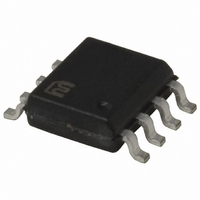MIC2196BM Micrel Inc, MIC2196BM Datasheet - Page 7

MIC2196BM
Manufacturer Part Number
MIC2196BM
Description
IC PWM BST FLYBCK CM 8SOIC
Manufacturer
Micrel Inc
Datasheet
1.MIC2196YM.pdf
(12 pages)
Specifications of MIC2196BM
Pwm Type
Current Mode
Number Of Outputs
1
Frequency - Max
440kHz
Duty Cycle
85%
Voltage - Supply
2.9 V ~ 14 V
Buck
No
Boost
Yes
Flyback
Yes
Inverting
No
Doubler
No
Divider
No
Cuk
No
Isolated
No
Operating Temperature
-40°C ~ 125°C
Package / Case
8-SOIC (3.9mm Width)
Frequency-max
440kHz
Input Voltage
14V
Frequency
400kHz
Power Dissipation Pd
285mW
Supply Voltage Range
2.9V To 14V
Digital Ic Case Style
SOIC
No. Of Pins
8
Operating Temperature Range
-40°C To +125°C
Lead Free Status / RoHS Status
Contains lead / RoHS non-compliant
Available stocks
Company
Part Number
Manufacturer
Quantity
Price
Company:
Part Number:
MIC2196BM
Manufacturer:
SIEMENS
Quantity:
5 510
Part Number:
MIC2196BM
Manufacturer:
MICREL/麦瑞
Quantity:
20 000
Company:
Part Number:
MIC2196BM TR
Manufacturer:
MICREL
Quantity:
1 486
Company:
Part Number:
MIC2196BMTR
Manufacturer:
MICREL
Quantity:
1 423
Functional Description
The MIC2196 is a BiCMOS, switched-mode multi-
topology controller. It will operate most low-side drive
topologies including boost, SEPIC, flyback and forward.
The controller has a low impedance driver capable of
switching large N-Channel MOSFETs. It features
multiple frequency and duty cycle settings. Current mode
control is used to achieve superior transient line and
load regulation. An internal corrective ramp provides
slope compensation for stable operation above a 50%
duty cycle. The controller is optimized for high efficiency,
high-performance DC-DC converter applications. Figure
1 shows a block diagram of the MIC2196 configured as
a PWM boost converter.
The switching cycle starts when OUTN goes high and
turns on the low-side, N-Channel MOSFET, Q1. The V
of the MOSFET is equal to V
ramp up in the inductor. The inductor current flows
through the current sense resistor, R
across the resistor is amplified and combined with an
internal ramp for stability. This signal is compared with
the error voltage signal from the error amplifier. When
the current signal equals the error voltage signal, the
low-side MOSFET is turned off. The inductor current
then flows through the diode, D1, to the output. The
MOSFET remains off until the beginning of the next
switching cycle.
The description of the MIC2196 controller is broken
down into several functions:
Control Loop
The MIC2196 operates in PWM (pulse-width modulated)
mode.
PWM Operation
Figure 2 shows typical waveforms for PWM mode of
operation. The gate drive signal turns on the external
MOSFET which allows the inductor current to ramp up.
When the MOSFET turns off, the inductor forces the
MOSFET drain voltage to rise until the boost diode turns
on and the voltage is clamped at approximately the
output voltage.
Micrel, Inc.
September 2008
•
•
•
•
•
•
Control Loop
PWM Operation
Current Limit
MOSFET gate drive
Reference, enable & UVLO
Oscillator
IN
. This forces current to
SENSE
. The voltage
GS
7
The MIC2196 uses current mode control to improve
output regulation and simplify compensation of the
control loop. Current mode control senses both the
output voltage (outer loop) and the inductor current
(inner loop). It uses the inductor current and output
voltage to determine the duty cycle (D) of the buck
converter. Sampling the inductor current effectively
removes the inductor from the control loop, which
simplifies compensation. A simplified current mode
control diagram is shown in Figure 3.
V
IN
Gate Driver
Figure 2. PWM Mode Waveforms
V
COMP
T
T
Figure 3. PWM Control Loop
PER
ON
I_inductor
I_inductor
I_inductor
I_inductor
Gate Drive at OUTN
V
M9999-092908
REF
Voltage
Divider
MIC2196












